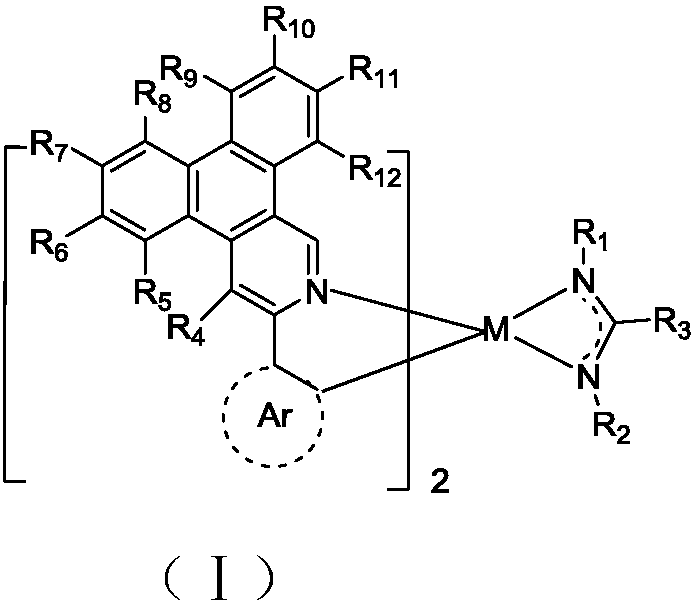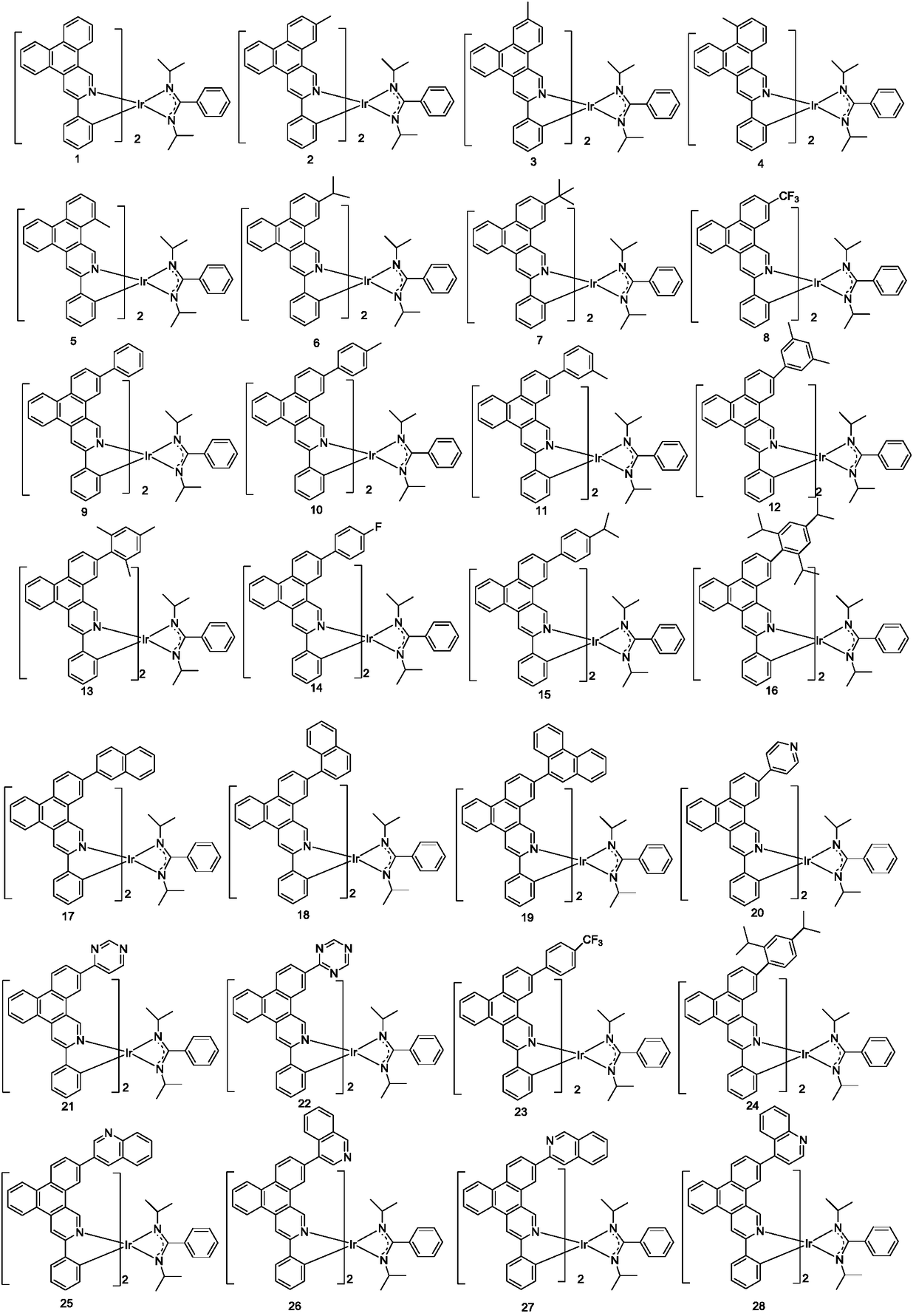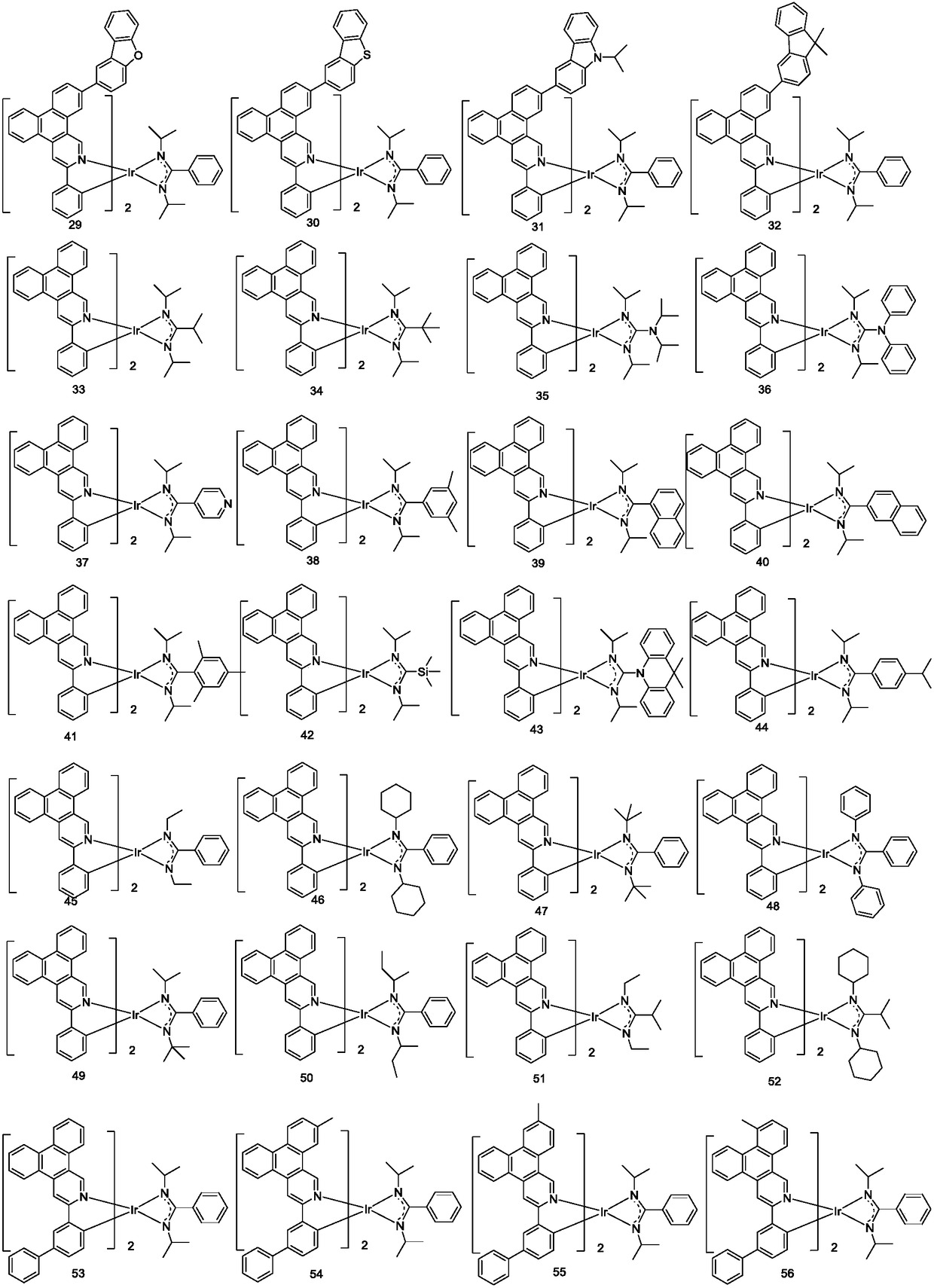Metal-containing organic complex and OLED (organic light-emitting diode) device comprising same
An organic complex and metal technology, applied in the field of metal-containing organic complexes and their organic light-emitting devices, can solve the problem that high-performance red phosphorescent materials need to be further developed.
- Summary
- Abstract
- Description
- Claims
- Application Information
AI Technical Summary
Problems solved by technology
Method used
Image
Examples
Embodiment 1
[0079] Embodiment 1: the preparation of compound 1
[0080]
[0081] Preparation of intermediate A1
[0082] Under nitrogen protection, compound 2-biphenylboronic acid-a1 and compound 2,5-dibromopyridine-b1 were added to a 100mL four-necked flask, and tetrakistriphenylphosphopalladium Pd (PPh 3 ) 4 (1.8g, 1.53mmol), a carbon-carbon coupling reaction occurred to obtain compound c1. Compound c1 (2.9 g, 10.9 mmol), iodine (281 mg, 1.1 mmol), and toluene were charged into a double-walled quartz photochemical reactor equipped with magnetic stirring, air bubbler and UV lamp. Gentle air was bubbled through the solvent while irradiating it for 15 hours in the reaction to compound d1. Compound d1 and compound phenylboronic acid-e1 undergo a carbon-carbon coupling reaction with tetrakistriphenylphosphine palladium as a catalyst and potassium carbonate as a base to generate intermediate A1.
[0083] Preparation of Intermediate B1
[0084] In a 1L three-necked flask, iridium trich...
Embodiment 2
[0089] Embodiment 2: the preparation of compound 2
[0090]
[0091] Preparation of Intermediate A2
[0092] Under nitrogen protection, compound g2 and compound h2 were added to a 100mL four-necked flask, and tetrakistriphenylphosphopalladium Pd (PPh 3 ) 4 (1.8g, 1.53mmol), a carbon-carbon coupling reaction occurred to obtain compound i2.
[0093] Compound i2 and compound m2 were added in a 100mL four-necked flask, and tetrakistriphenylphosphopalladium Pd (PPh 3 ) 4 (1.8g, 1.53mmol), a carbon-carbon coupling reaction occurred to obtain compound n2. Compound n2 was dissolved in tetrahydrofuran (140 mL), and a hexane solvent and 2.5M n-butyllithium (18 mL, 45.1 mmol) were added dropwise at -78°C, followed by stirring for 1 hour. After slowly adding trimethyl borate (13 mL, 56.4 mmol) dropwise, stirred for 2 h. Then 2M hydrochloric acid was added dropwise to neutralize, and the product was extracted with ethyl acetate and water. Compound a2 was obtained by recrystalliza...
Embodiment 3
[0101] Embodiment 3: the preparation of compound 9
[0102] The m2 in Example 2 was replaced by equimolar m9, and the other steps were the same as in Example 2 to obtain the target compound 9 (6.71 g, 29%).
[0103]
[0104] Mass Spectrum m / z: 1157.42 (calculated: 1157.41). Theoretical element content (%)C 71 h 56 IrN 4 : C, 73.68; H, 4.88; Ir, 16.61; N, 4.84 Measured element content (%): C, 73.68; H, 4.87; Ir, 16.62; N, 4.84. The above results confirmed that the obtained product was the target product.
PUM
 Login to View More
Login to View More Abstract
Description
Claims
Application Information
 Login to View More
Login to View More - R&D
- Intellectual Property
- Life Sciences
- Materials
- Tech Scout
- Unparalleled Data Quality
- Higher Quality Content
- 60% Fewer Hallucinations
Browse by: Latest US Patents, China's latest patents, Technical Efficacy Thesaurus, Application Domain, Technology Topic, Popular Technical Reports.
© 2025 PatSnap. All rights reserved.Legal|Privacy policy|Modern Slavery Act Transparency Statement|Sitemap|About US| Contact US: help@patsnap.com



